News
Visa is the “bridge” between payments and Blockchain technologies: responsible for cryptocurrencies | video
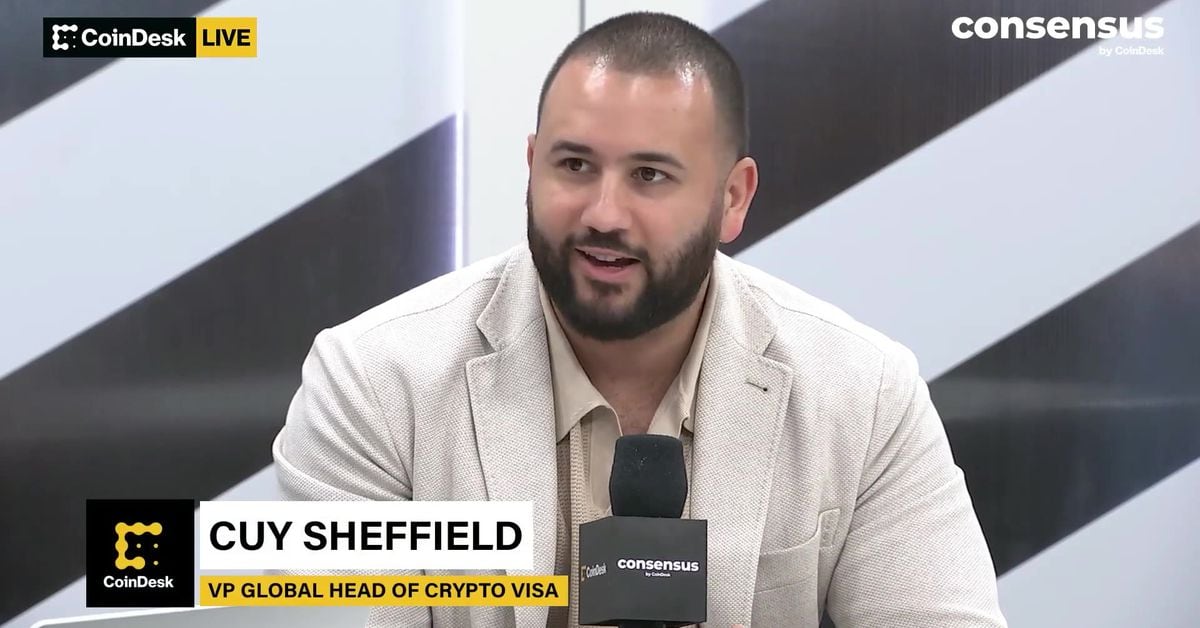
We welcome Visa’s head of cryptocurrency, Kai Sheffield, to the show. Welcome, it’s great to be here. Thanks for having me. Thanks for sitting there while we did our little puppet show. Is fantastic. All right. So we’re at the 2024 consensus. Uh Tell us about what your experience has been so far. This is the second day. What were the vibes like for you? Is fantastic. I think there’s a lot of energy and momentum. We’re really excited to see what developers are building and, and really, how much, you know, Blockchain technology has started to mature and how the infrastructure has improved and you know, a lot of different payments use cases, you know, that you think that stablecoins, which you know, can help enable this. And so it’s been great to interact with a lot of customers, a lot of companies and partners in the payments ecosystem who are all researching and exploring how Blockchain technologies can be used to improve payment flows. Now Visa is one of the most important companies for payments of any kind in the world. And you’ve been there for a while as the head of crypto, I’m wondering from a couple of years ago, how have the conversations changed between then and now internally, like the ideas that you’re championing for the projects that you’re pushing, like Has the inside of a visa changed over time? So we’ve been making really steady progress, you know, consistently every week for five years now. And we actually built the crypto team in the depths of the bear market in late 2018, early 2019. And so our approach was really based on a long-term view. Uh Visa is said to be concerned with any technology that has the potential to improve payments. And so we wanted to take our time, you know, figure out how we could use these technologies to support, you know, our partners. Uh And, you know, we started experimenting with stable coins. We started doing a lot of research and a lot of training, you know, for our customers. And our goal is to continue making consistent and steady progress over the next decade. Uh And we’re really excited about the opportunities that particularly stable coins can offer five years for bulls and bears. It was a nice setup. We didn’t know that we were going to do this with our puppets, um internally. Has there ever been any pushback from anyone who challenged you during the bear market? For example, should we put time and effort into building this industry that seems to be quite unstable? I don’t think we’re, we’ve been really fortunate to be part of a company that has a culture that, you know, from the very beginning, from the early days of Visa and, you know, Dee Haw, you know, going back to the sixties, you know , recognize that value will be digitized. It’s going to move across a lot of different networks, and we want to be the single point of connection for customers, you know, to move value to a lot of different places in a lot of different payment flows. Uh And so we recognize that, you know, cryptocurrency prices are volatile. We don’t really care about the pricing, we care about the underlying technology and the ways in which it can be implemented within the payments ecosystem, but it takes time to do it and you have to do it in a client controlled, you know, secure way. Uh And so we’re really here for the long haul and we’ve continued to make steady progress, you know, despite current market cycles in a recent research paper on visas, I believe you and your colleagues have found that multi trillion dollar stability coin market, only a fraction of them are actually used by real people in terms of payment, I think 100 and 49 billion or some figure like that, which is a large number, but it is, it is not representative of the stable use of coins all in all. What do you think it will take to increase that number and increase the actual adoption of stablecoins as an appropriate means of payment. So, first of all, we think one of the unique aspects of stablecoins is the fact that you could see all the data, you know, on the chain. And so we’ve invested a lot of time and resources and how to understand the on-chain data and understand how stable coins are used. Uh And so we partner with AM Labs, we created a seen dashboard on chain analytics.com. And it was really this exercise of, you know, we use internally on chain data. Uh, you know, it answers some questions, it opens up a lot of other questions and we wanted to make it available as a free public tool and resource for our clients, for politicians, for the media. And you know, we started with these adapted transactions, you know, metric, you know, trying to filter out transactions that appear to be initiated, you know, by bots or as part of smart contracts. It’s not perfect. Uh So we’re not saying that’s it, that’s the end of it. But we think there’s so much opportunity that the industry can really use on-chain data to, you know, better understand how people are using stablecoins. And for us it’s not like stable coins are used by consumers to buy coffee. Its stablecoins are used for things like large-value B-to-B payments. Uh cross border, you know, peer to peer. Uh And so I think we’re just at the point where we’re crossing the divide between consumers who are already in the crypto space, trading crypto on an exchange using stable coins, you know, paying other people in crypto for there’s an infrastructure that can enable for mainstream consumers, particularly outside the United States in emerging markets, to pay each other, to pay companies in many of these flows, on the rails of Blockchain, but there’s still a long way to go. Um, we’re excited to figure out how we can partner with existing companies in the payments ecosystem to start integrating stable coins in unique ways. And we think it should be both together. It is neither a traditional payment network nor a stablecoin. Will it be how they can interact with each other to improve payments? Tell us something more about it. What is Visa’s role in the future of stablecoins? Yes. So we see ourselves as a bridge between Blockchain technology stablecoins and the existing payments ecosystem. One of the things we’re doing is investing in how we can use stablecoins within some of our core products. You know, for example, when you tap to pay with a Visa card, it’s immediately authorized and you could walk out of the store. But there’s a lot of things that have to happen in order for the money to move from the issuer of that card, you know, to the merchant bank on the other side. And so we started experimenting with stablecoins like us cc that run on blockchains like solana to give our customers the ability to settle with us, you know, on a Blockchain. So we can receive stable coins, you know, into an account that we have in a circle, we can then convert them, you know, to pay in fiat to the choir merchant. And so I think we have such a broad and diverse network of traditional financial institutions, fintechs and crypto companies. We are trying to understand how the visa can be a bridge so that not all those companies adopt stable coins and blockchain at the same time, let’s meet them where they are. If they want to use stablecoins, great, we could support it. They operate in traditional fiat. We’ll handle conversions, you know, within it. So we’re excited to see how we can play that role, that bridging role. And this reminds me that before the contestants I cut my hair before the conference, like we all do. Uh, my barbershop only takes cash. I said, oh, it was just about the fees because often small businesses don’t like credit cards because of the fees. He said no, it’s actually not because of taxes. It’s because on Fridays, if I get paid by credit card, I can’t go to the bank to withdraw the money because the banks are closed. So I’m wondering how Visa is thinking about actually helping small businesses use and realize that stable coins could allow for instant settlement and could accept digital payments. Uh and you don’t have to worry about things like banks closing on weekends. Yes. So, there’s a lot of things that we’re doing across the company trying to accelerate, you know, how quickly we can get money, particularly for small businesses. You know, we have a product called Visa Direct that you could do, push payments and be able to have a small business, get money straight to their debit card over a weekend. And so we don’t think that it’s just stable coins. We believe stablecoins have potential and, on the back end of existing Visa products, could potentially move money faster. But we believe there are many ways the payments ecosystem will continue to evolve and drive revenue by getting small businesses where they need them faster. It seems that Visa is focused when it comes to cryptocurrencies on stable coins. I have to ask you in 2022. I was so excited when I heard that Visa had trademark applications for things like NFTS and Metaverse and, and wallets. Uh what’s up with those? Is there any focus on this? They have been put aside while you focus on stablecoin research dashboards and look at how a visa can work with stablecoins. So we continued to follow the NFT ecosystem and the broader creator economy. Um, we think it’s definitely evolved and changed. And I think, you know, when we started, you know, exploring, experimenting with NFTS, NFTS were really only on blockchains like Ethereum and they were quite expensive to run and, you know, there was an ecosystem of, you know, the fine art that people were, collected. Now, I think some of the changes that we’re starting to see are around a lot of NFTS use cases like things like loyalty. You know, you can now mint NFTS for fractions of cents. And so we’re seeing interesting experiments with things like digital receipts and loyalty programs where if you own an NFT, you can get a discount on several purchases. And so, you know, the culture that we have is really trying to learn by doing and, you know, working with customers around proof of concepts. We have a visa consulting and analytics business where issuers and merchants have come to us to say, how do we incorporate NFTS into a loyalty program? And so we’re absolutely still interacting with the ecosystem and experimenting. I think we’ve just seen a lot of the use cases for NFTS evolve a little bit from where they were a few years ago, but overall, we’re still really excited about the broader economy and the role that blockchains could play within it. Hi, thank you so much for joining us this morning. We hope you enjoy the rest of the conference. Thanks for having me. It was great. That was the head of Visa’s Crypto Kai Sheffield.
News
Blockchain Technology Will Transform Water Access and Management Globally

Disclosure: The views and opinions expressed here are solely those of the author and do not represent the views and opinions of the crypto.news editorial team.
Access to clean water is a basic human need, yet billions of people around the world still struggle to get it. According to the World Health Organization, over 2 billion people live in countries suffering from severe water stress, and this number is expected to continue to grow due to climate change and population growth.
Traditional water management systems have struggled to address these challenges, often hampered by inefficiencies, lack of transparency, and misallocation of resources. Blockchain technology offers a promising solution to these challenges, providing equitable access and sustainable use of this crucial resource.
The current state of water management
Water management today faces several pressing issues. Inefficiencies in water supply, distribution, and use, coupled with a lack of real-time monitoring, often result in resource waste and misallocation. Many water sources fail to realize their full potential due to infrastructure and financing shortfalls. For example, the Environmental Protection Agency (EPA) report indicated that the United States would need to invest $625 billion over the next 20 years to repair, maintain and improve the country’s drinking water infrastructure due to aging pipes and other infrastructure problems. Additionally, in the United States alone, household leaks can to waste nearly 900 billion gallons of water per year nationwide. This is equivalent to the annual domestic water consumption of nearly 11 million homes.
Furthermore, corruption and mismanagement of water resources can cause unequal distribution, with disadvantaged communities often bearing the brunt of water scarcity. For example, South Africa is struggling with myriad challenges to its water security: drought, inadequate water conservation measures, outdated infrastructure, and unequal access to water resources. The country faces significant water scarcity, with demand expected to outstrip supply by 2030, creating a projected gap of 17%.
Furthermore, the global water industry is highly monopolized, with a few key players controlling a significant share of the market. These companies exert substantial influence over the water supply chain, often prioritizing profit over equitable distribution and environmental responsibility. This concentration of power can lead to inflated prices and limited access for vulnerable populations. The global bottled water market alone is projected to reach $509.18 billion by 2030, with these large companies capturing a significant share of revenue. This monopolization exacerbates existing inequalities in water access and highlights the need for more decentralized and community-driven water management solutions.
Source: Grand View Search
The potential of blockchain in water management
Blockchain technology can address these issues by providing a transparent, secure, and decentralized platform for water resource management. This approach offers several advantages:
- Transparency and accountability. Blockchain’s immutable ledger ensures that all transactions and data entries are transparent and cannot be changed once recorded. This transparency can reduce corruption and ensure that water resources are allocated fairly and efficiently. For example, blockchain can be used to track water usage from source to end user, providing a clear record of how water is distributed and used. This level of transparency can help hold authorities accountable and manage water resources sustainably.
- Efficient resource management. Blockchain can facilitate the creation of smart contracts, which are self-executing contracts with the terms of the agreement written directly into the code. These contracts can automate water distribution based on real-time data, directing water to where it is needed most. For example, smart contracts could be used to manage urban water supply systems, automatically adjusting water distribution based on real-time consumption patterns and demand. This can help optimize water use, reduce waste, and ensure that households and businesses receive the right amount of water at the right time.
In Dubai, the Dubai Electricity and Water Authority (DEWA) has implemented a blockchain-based smart water network initiative as part of its broader smart city strategy. This project integrates blockchain technology with IoT sensors to monitor water usage in real time, manage distribution, and detect leaks. The decentralized ledger ensures data integrity and transparency, enabling more efficient water management and reduced waste. DEWA’s initiative aims to improve sustainability and resource management in the rapidly growing city, highlighting the potential of blockchain to support urban water management and conservation efforts.
Community participation and ownership
Through blockchain, individuals can directly control and monetize their access to water resources, eliminating the need for third-party intermediaries. This direct control model allows local communities to make collective and transparent decisions about their water use. By managing their water directly from the source, communities can tailor water management practices to their specific needs, promoting equitable distribution and encouraging a sense of accountability and stewardship.
Additionally, future models could allow people to monetize their access to water through web3 technologies. For example, a community-to-business (C2B) model could allow people to sell water directly to companies. In this model, people do not have to own the water directly, but can profit by staking their tokens during event sales pools. This approach not only supports sustainable water management, but also creates economic opportunities for community members. Additionally, a “Burn to Secure” protocol can be used to provide water allocation rights. This protocol provides a true sense of water security and financial opportunity by allowing people to redeem their rights. This system not only secures future water allocations, but also increases token scarcity and value.
Additionally, a pure sense of investment is achieved through investments in water sources. This leads to potential financial returns and dividends by addressing the inefficiencies in water supply mentioned above. By investing to finance infrastructure projects, such as building factories and improving distribution systems, more water can be brought to communities, creating additional economic opportunities.
Monetizing water access through the C2B model, the “Burn to Secure” protocol, and investments in water sources all generate economic benefits for the community, promoting a more equitable and efficient water management system.
Overcoming challenges
While blockchain technology has the potential to improve water management, there are challenges to its adoption. The complexity of blockchain systems and the need for technological infrastructure can be barriers, especially in developing regions. Additionally, there are concerns about the significant energy consumption of blockchain networks. However, technological advances and the development of more energy-efficient blockchain solutions are helping to alleviate these concerns. Additionally, education and capacity building are key to ensuring stakeholders understand how to effectively use blockchain technology. Governments, NGOs, and private sector partners need to work together to provide training and support to communities and water management authorities.
Blockchain technology offers a practical and effective means to improve water management. In addition to addressing inefficiencies, blockchain empowers communities, promotes sustainable practices, and opens up new economic opportunities through models like community-to-business (C2B). As we face the growing challenges of climate change and population growth, blockchain is not only an innovative solution, but represents a fundamental shift in the way we manage and value water resources. Adopting blockchain in water management is essential to creating a sustainable and equitable future by changing the way we interact with and protect our most vital resource.

Jean-Hugues Gavarini
Jean-Hugues Gavarini is the CEO and co-founder of LAKE (LAK3), a real-world asset company leveraging blockchain technology to decentralize access to the global water economy. LAKE aims to ensure access to clean water for all, protect water resources, and deliver water to those in need through innovative technologies. Jean-Hugues has a diverse career spanning the luxury, fashion, and footwear industries. His career path includes notable successes at Mellow Yellow, Cremieux, and Tod’s. Raised between Silicon Valley and the French Alps, Jean-Hugues has always been immersed in technology and freshwater resources. In 2018, Jean became the CEO of Lanikea Waters, a water solutions entity based in the French Alps. In 2019, the concept of LAKE was born, embodying his commitment to innovation and sustainability.
News
Blockchain and AI Expo 2024
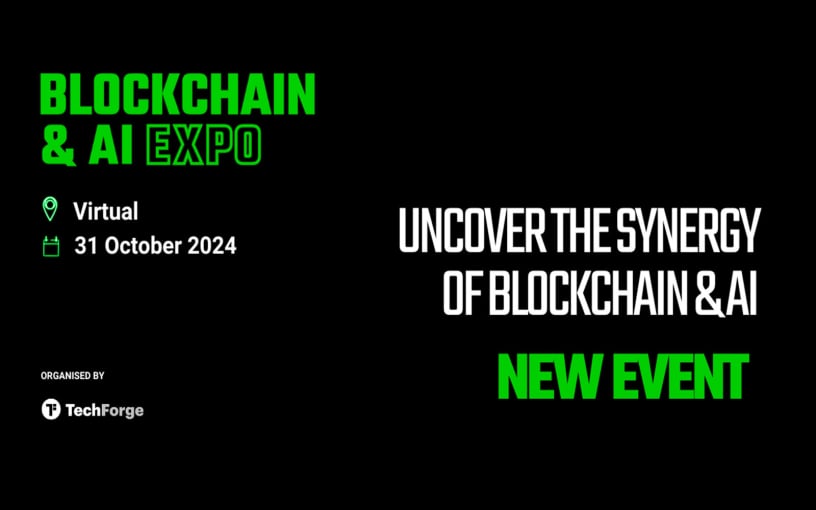
With rapid advances in the world of AI and blockchain, there are opportunities to leverage the security and transparency features of blockchain to improve the reliability and trust of AI systems and data transactions.
Explore the synergy of these advanced technologies in virtual mode Blockchain and AI Expowhich takes place on October 31, 2024 TO 10:00 GMT.
The event features cutting-edge presentations led by leading experts in evolving fields. Presentations are set to explore opportunities and challenges in the fusion of blockchain and AI, real-world applications, ethics, innovations in environmental sustainability, and more!
Gain a comprehensive understanding of how these technologies can synergistically drive innovation, optimize operations, and promote strategic growth opportunities. Develop your knowledge to facilitate informed decision making and give your company a competitive edge in the growing technology landscape.
News
Nigeria Eyes National Blockchain Nigerium for Data Sovereignty
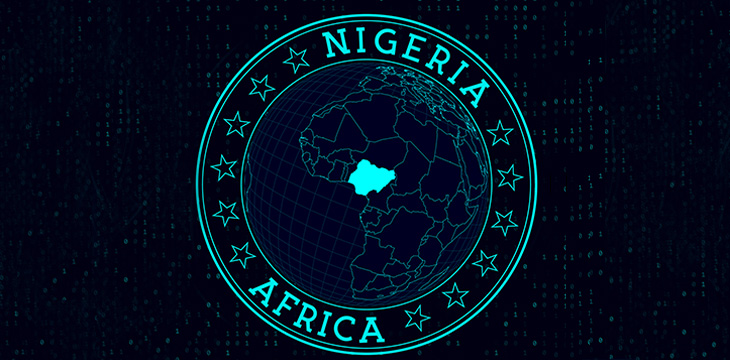
Nigeria is keeping an eye on a new native blockchain network to protect the country’s data sovereignty.
According to local media, a team from the University of Hertfordshire has proposed the new blockchain, Nigeriato the National Information Technology Development Agency (NITDA).
Chanu Kuppuswamy, who leads the team, argued that relying on blockchain networks whose developers are located in other regions poses national security risks to the Nigerian government. He further said that Nigerium would allow the West African nation to customize the network to meet specific needs, while also promoting data sovereignty.
In his presentation, Chanu cited the recent migration of Ethereum to test of participation (PoS) consensus as an instance in which no Nigerians were involved but whose impact is far-reaching.
“Developing an indigenous blockchain like Nigerium is a significant step towards achieving data sovereignty and promoting trust in digital transactions in Nigeria,” he said.
While receiving the proposals in Abuja, NITDA’s Kashifu Abdullahi acknowledged the benefits a local blockchain would bring to Nigeria, including increased security of citizens’ data.
However, a NITDA spokesperson later clarified that Nigerium is still at the proposal stage and that the government has not yet decided whether to proceed or not.
“The committee is still discussing the possibility with stakeholders. Even if a decision is finally made, there is no guarantee that the name will be Nigerium,” the spokesperson told the media.
Nigerium’s reception in the country has been mixed. Some, like financial analyst Olumide Adesina, To say the network is “dead on arrival”. He believes the Nigerian government’s poor record in following through on its big technology plans will claim another victim. He pointed to the eNaira as a missed opportunity whose chances of success were much higher than those of Nigerium.
Others welcomed the proposal. Chimezie Chuta, who chairs the renewed The Nigerian Blockchain Policy Committee is “extremely optimistic“that Nigerium will be more successful than eNaira.
Speaking to a local news agency, Chuta stressed that eNaira failed because the central bank initiated the project on its own, without involving any stakeholders.
“They just cooked it and expected everyone to like it. [With Nigerium]there will be a lot of collaboration,” he said.
Registration of property title, digital identity and Certificate Verification are among the use cases that Nigerium is expected to initially target. However, Nigeria has already made progress in some of these fields through public blockchains.
SPPG, a leading school in governance and politics, announced in May the country’s first blockchain certificate verification system. Built on the The BSV BlockchainIt was developed in collaboration with the blockchain data recording company VX Technologies and local lender Sterling Bank.
Watch: The Future Has Already Arrived in Nigeria
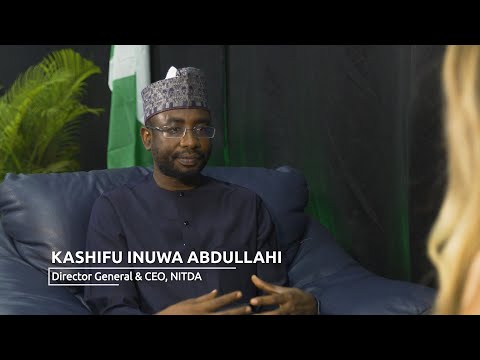 Italian: https://www.youtube.com/watch?v=M40GXUUauLU width=”560″ height=”315″ frameborder=”0″ allowfullscreen=”allowfullscreen”>
Italian: https://www.youtube.com/watch?v=M40GXUUauLU width=”560″ height=”315″ frameborder=”0″ allowfullscreen=”allowfullscreen”>
New to blockchain? Check out CoinGeek Blockchain for Beginners section, the definitive guide to learn more about blockchain technology.
News
Cambodian CBDC Developer to Build Palau Bond Market on Blockchain: Report

A Japanese fintech developer will build a blockchain-based bond market gateway for Palau, aiming to launch a trial in 2024 and a full launch the following year.
Japanese fintech developer Suramitsubest known for developing a central bank digital currency (CBDC) for Cambodia, is intended to build a Blockchain-gateway to the bond market based on the Pacific island nation of Palau, Nikkei He learned.
Soramitsu won the contract and plans to introduce the market on a trial basis in fiscal 2024, with a full launch scheduled for the following year, allowing the Palauan government to issue bonds to individual investors and efficiently manage principal and interest payments, according to the report.
The total cost of the project is estimated at several hundred million yen ($1.2 million to $5.6 million), less than half the cost of a non-blockchain alternative, people familiar with the matter said. The project has reportedly received support from Japan’s Ministry of Economy, Trade and Industry, with Japan’s foreign and finance ministries providing strategic and management advice on the project.
Soramitsu’s successful development of Cambodia’s CBDC in 2020 has boosted its reputation, with the digital currency’s popularity soaring, with over 10 million accounts opened by December 2023, representing 60% of Cambodia’s population. Following this, Cambodia’s central bank governor Chea Serey indicated intends to expand the reach of its CBDC internationally, particularly through collaboration with UnionPay International, the Chinese card payment service, and other global partners.
While Soramitsu’s work in Cambodia has been well received, the long-term popularity of CBDCs remains to be seen. As of late June, crypto.news reported a sharp drop in activity in India’s digital currency, the e-rupee, after local banks stopped artificially inflating its values.
According to people familiar with the matter, the Reserve Bank of India managed to hit the 1 million retail transaction milestone last December only after the metrics were artificially infiltrated by local banks, which offered incentives to retail users and paid a portion of the bank’s employees’ salaries using the digital currency.
-

 News1 year ago
News1 year ago“Captain Tsubasa – RIVALS” launches on Oasys Blockchain
-

 Ethereum1 year ago
Ethereum1 year agoComment deux frères auraient dérobé 25 millions de dollars lors d’un braquage d’Ethereum de 12 secondes • The Register
-

 News1 year ago
News1 year agoSolana ranks the fastest blockchain in the world, surpassing Ethereum, Polygon ⋆ ZyCrypto
-
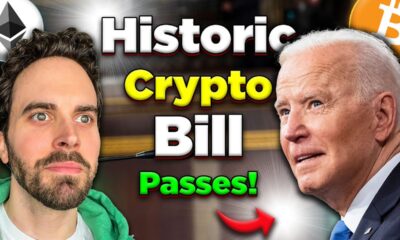
 Videos1 year ago
Videos1 year agoHistoric steps for US cryptocurrencies! With a shocking majority vote!🚨
-

 Videos1 year ago
Videos1 year agoIs Emorya the next gem💎 of this Bitcoin bull run?
-

 News1 year ago
News1 year agoSolana Surpasses Ethereum and Polygon as the Fastest Blockchain ⋆ ZyCrypto
-

 Videos1 year ago
Videos1 year agoNexus Chain – Ethereum L2 with the GREATEST Potential?
-

 Ethereum1 year ago
Ethereum1 year agoScaling Ethereum with L2s damaged its Tokenomics. Is it possible to repair it?
-

 News1 year ago
News1 year agoFnality, HQLAᵡ aims to launch blockchain intraday repositories this year – Ledger Insights
-

 Regulation1 year ago
Regulation1 year agoFinancial Intelligence Unit imposes ₹18.82 crore fine on cryptocurrency exchange Binance for violating anti-money laundering norms
-

 Bitcoin1 year ago
Bitcoin1 year agoBitcoin Drops to $60K, Threatening to Derail Prices of Ether, Solana, XRP, Dogecoin, and Shiba Inu ⋆ ZyCrypto
-

 News1 year ago
News1 year agoSendBlocks Debuts with Major Support to Improve Blockchain Data Management










